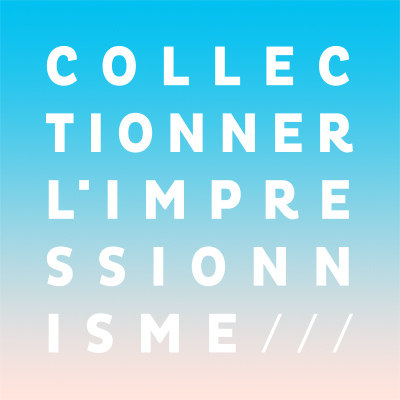BUILDING THE COLLECTION: ARTISTS AND AMATEURS
How is the passion for Impressionism born within the collection? At a time of generalized collecting, the decision of some collectors to favor Impressionism raises the question of their motivations. The impact of socio-economic background, personal history or even geographical location on this decision will be examined through the experience of Gustave Fayet and the de Nittis family. These trajectories also play a very important role in the creation of Impressionist artists’ own collections, which will be addressed in a comprehensive study.
Alexandre d’Andoque
Association du Musée d’Art Gustave Fayet à Fontfroide
Gustave Fayet’s impressionist collection
Gustave Fayet, born in 1875 in Béziers and died in 1925 in Carcassonne, was an important and rich Languedoc vineyard owner as well as a talented businessman. He was also a painter, ceramist, illustrator and decorator. Recent retrospectives have endeavored to rehabilitate the artist. However he remains best known in art history as a collector of Gauguin and a friend of Redon, to whom he commissioned portraits and the great decorations of the library of the Abbey of Fontfroide.
But when Fayet began collecting in 1900, he was first interested in the Impressionists. In five years, he gathered, alongside his first Gauguin and Van Gogh, an important collection of pastels by Degas, oils and watercolors by Cézanne, works by Renoir, as well as a few pieces by Monet, Pissarro or Morisot. In all, more than forty works, some of which belonged to first generation collectors.
He sometimes buys at public auctions, at the sale of Abbé Gaugain for example. But when he is in Paris, he prefers to go, accompanied by his friend and collector, Maurice Fabre, to Durand-Ruel, Bernheim-Jeunes or Vollard to look at, discuss, select and negotiate the works.
To acquire these paintings, Fayet often offered dealers in exchange money works from Armand Cabrol's collection, 40 oils, pastels and drawings by Carrière, Degas, Manet, Monet, Monticelli, Pissarro, Renoir or Sisley that he bought in December 1899 or works inherited from his father.
With the exception of seven Renoir works that would remain in the collection until his death in 1925, Fayet exchanged or resold the works acquired from 1905 onwards, sometimes making good deals, as when he sold together to Charles Pacquement for 100,000 francs eight Cézanne in June 1910.
One of the most interesting aspects of the artistic career of Giuseppe De Nittis (1846-1884), leader of the so-called "Italian Impressionism" in Paris, is the close connection between the dynamics of his personal life and those of his collecting. Until his death, the artistic spirit of the Italian painter, on the one hand, was conditioned by socio-economic demands resulting from the bovarysm of his wife Léontine, while, on the other hand, he showed a resolute and natural propensity toward the Impressionist creed, which he welcomed however in a ‘moderate’ way. In this context, De Nittis related to some members of the French avant-garde becoming sometimes a collector of their works and, at his turn, being 'collected' by them.
That of the Italian painter was a modest collection, but which allows one to analyse his dichotomous and conflicting approach to the French movement: in some respects, collecting the Impressionism, De Nittis collected the artistic and ethical principles in which he strongly believed since his youth in Naples, but that he could no longer embrace because of the dizzying work to support the costs of social ambitions of his wife. This artistic duality of the Italian painter essentially ended up splitting his activity between obligation and delight, making him a 'transformer' of the French scene of the second half of the Nineteenth Century.
Gwendoline Corthier-Hardoin
École normale supérieure de la rue d’Ulm
The creation of Impressionist artists’ collections
In 1874, when the first exhibition of the Anonymous Society of Painters, Sculptors, Printmakers was held, the lenders of the works for the event, as well as for the seven other exhibitions organised by the group that followed, were regularly the artists themselves. Each of them had already, or acquired at the same time, tutelary figures from the history of art, who encouraged them in their own plastic research, such as Corot, Delacroix, Ingres and Millet. The common interest in the latter, but also the fraternal and supportive nature of the Impressionist adventure, led the artists to make gifts and exchanges, testimony to mutual trust and respect, but also to alliances. Moreover, the comfortable income obtained by some of them encouraged them to make purchases, from dealers and at public sales, in order to obtain works by their Impressionist colleagues. Indeed, the development of the art market, through the advent of the figure of the merchant as well as auctions, fundamentally contributed to the enrichment of the artists' collections. In this sense, the economic environment in which the impressionists evolved, but also the fraternity that animated them, the direct access to plastic research and the common will to find a new identity, contributed to an intense and early circulation of works.
Aucun sujet n'a été trouvé ici
© 2024 Impressionnisme


 >>> Go to french
>>> Go to french


